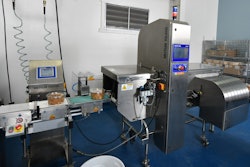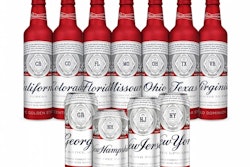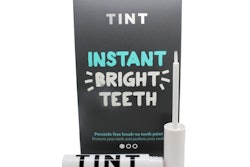No other single packaging material provides the combined benefits of glass: clarity, barrier to moisture and gases (UV light, too, when colored), chemical inertness, premium image, and reassuring tactile signals. Its susceptibility to breakage conceded, glass, nonetheless, has excellent resistance to compression. Such benefits are inherent in glass, dating back to its earliest use as a packaging material. But newer are the innovative ways that the glass packaging industry is delivering added value to end-users.
Glass is uniquely positioned regarding sustainability. While not renewable by definition, glass’ main component, silica (sand)──for all intents and purposes──is inexhaustible (and inexpensive). To slightly lesser extents, the same is true of major components soda ash (helps the melting of the sand) and limestone (imparts strength). Glass is not only recyclable but can incorporate as much as 90% cullet (ground glass) within a batch. Cullet allows lower temperatures in glass-making, resulting in energy savings. Reusability is yet another characteristic. All of which adds up to an impressive set of sustainability credentials, made more so by the industry’s commitment to source-reduction (lightweighting).
From by design to buy design. Glass containers are manufactured by various methods, namely, blow & blow, press & blow, and narrow neck press & blow, depending on whether the container is to be a jar or a bottle. Especially regarding the latter, choices in shapes, finishes, and enhancements (i.e. embossing) allow end-users almost limitless paths to product differentiation and point-of-purchase impact.
The spirits industry, enabled by higher margins than those of the beer and wine industries, leads the way in leveraging package design for competitive advantage. Many of the designs qualify as works of art, with esthetics matched by functionality. Their lower margins notwithstanding, the beer and wine industries are being provided with affordable, yet attractive, design options. The beer industry needs them, if for no other reason than the increasing number of craft beers; and the wine industry needs them, if for no other reason than the increasing number of smaller wineries.
Alcoholic beverages don’t have a monopoly on a good thing. Various brands of milk are bottled in returnable glass bottles, a nostalgic nod to an earlier era. The practice, furthermore, is the foundation for various subscription home-delivery services (yes, the milkman cometh). Remaining in the bottle category, there’s a range of shapes and sizes, from carafes to vials, serving the variety of product categories that use them.
Jars, although less given to shape variety (most are cylindrical), provide choices as to how best to enclose a specified volume. Tall vs. squat, wide-mouth vs. wider-mouth, there are no self-presenting answers to the myriad of questions attendant to packaging-related decisions.
Artisans and engineers collaborate to make the most of the design function. The use of computer-aided technologies, in particular, allows designs to be rendered and evaluated with speeds that reduce lead times, which benefit the end-user’s speed-to-market. One result of that collaboration is customized containers that require less upfront investment from the end-user, owed to simplified mold design and fewer production stations. Another result is production runs become economically feasible at smaller case quantities. All of that is especially appreciated by the end-user when marketing efforts are short of, say, a national launch, for example, market tests, limited editions, and commemoratives.
Packages that live in glass houses. Sand, soda ash, and limestone (along with cullet and other components, as required by the end-product) are mixed in precise proportions and fed into a furnace, temperatures ranging upwards of 2,000 degrees F.
The molten mass is extruded through circular dies and is continually snipped into gobs, the weights of which are determined by the type of container to be made. The gobs slide down chutes and into individual molds, where they are blown into individual containers. The molds open and the newly-formed container is mechanically lifted onto a conveyor, leading to an annealing oven. On the way, flames lick the containers, so that cooling doesn’t occur too fast, which would induce stresses. It’s inside the annealing oven, however, where the main cooling and stress relief occur, without which, the containers would be subject to cracking and breaking. Upon exiting the annealing oven, the containers are sprayed with a coating that imparts lubricity, needed slipperiness against incidental glass-to-glass contact.
Shouldn’t throw stones (or other imperfections). The processes that produce the formed, annealed, and sprayed containers perform under exacting quality assurance, which has to continue, up until the time the containers are unitized for shipment. Stones, bubbles, spots, poor glass distribution, defects in the finish, residual stresses in the sidewalls and heals, and a host of other objectionables──some marring aesthetics, others marring function──need to be prevented from entering the commercial stream.
The layout of a modern glass-making facility houses an interconnected network of real-time quality assurance technologies, including thermal imaging, lasers, and cameras. They reflect the philosophy that defect-free production can be built in but not inspected in. It’s not enough to detect defects; rather, what’s needed is the ability to associate a defect with a specific mold number or inspection station. Further assisting in that effort is the traceability afforded by the individual coding of containers. And no glass-making facility can be regarded as state-of-the-art without a well-equipped in-house laboratory, where the essential properties of containers are tested.
As is often the case, technological advancements can present challenges to quality assurance. An example is the increasing number of colors in which glass containers are available. Far beyond clear flint and beyond traditional colors such as amber, cobalt, and green, glass is available in various shades, and even in black. The darker the color, however, the more difficult it is to perform certain quality assurance checks that rely on being able to “see” through the container. An innovative solution is to color the containers only dark enough to allow the needed quality assurance checks, after which, the containers are submitted to further processes that achieve the target darkness.
The realities of competition favor the glass maker that couples innovation with top-shelf quality assurance. An increasingly adopted concept is that of supplier certification, wherein the supplier guarantees that the end-user will receive goods that are fit for their intended purpose. Advantages to end-users include: just-in-time scheduling; items taken from transportation vehicles, straight to filling lines; and reduced inventory carrying costs.
Glass: the clear choice. At one time, it was the industry advertising slogan, a play of words, based on the signature trait, clarity. Even today, the trade association, Glass Packaging Institute, sponsors the Clear Choice Awards, given to end-users who have made creative uses of glass packaging. While clarity cannot always be said of glass, one thing that can be said is that the industry faces no glass ceiling.
____________________________________________________________________
Sterling Anthony, CPP, is a consultant specializing in packaging, marketing, logistics, and human-factors. His contact information: 100 Renaissance Center, Box-176, Detroit, MI 48243; telephone 313-531-1875; [email protected]; www.pkgconsultant.com


























